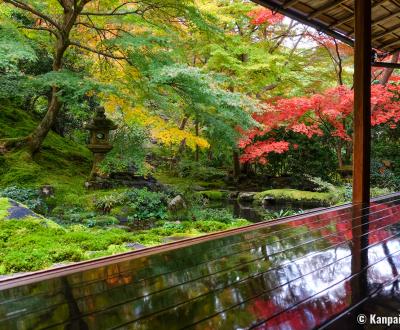Ruriko-in
The Memorable View on the Maple Trees’ Colorful Foliage
Ruriko-in is a Buddhist temple of the Jodo (Pure Land) branch located in Yase neighborhood, in the north-east of Kyoto. Recently opened to the public, it has become extremely viral on social networks and therefore very popular among tourists over the past few years for its beautiful mirror view of its Japanese maple trees garden.
Ruriko-in’s grounds have been closed to the public for the longest time. It was only in 2013 that the temple opened to visitors and offered to their admiration its poetic moss garden surrounded by a little maple tree forest, during two highlight seasons:
- In spring 🌸, (between April and May) for enjoying the new leaves’ soft green.
- In autumn (between October and November) to admire the momiji 🍁 red foliage.
The opening dates of the temple vary each year according to the weather conditions and the time of the foliage’s expected peak.
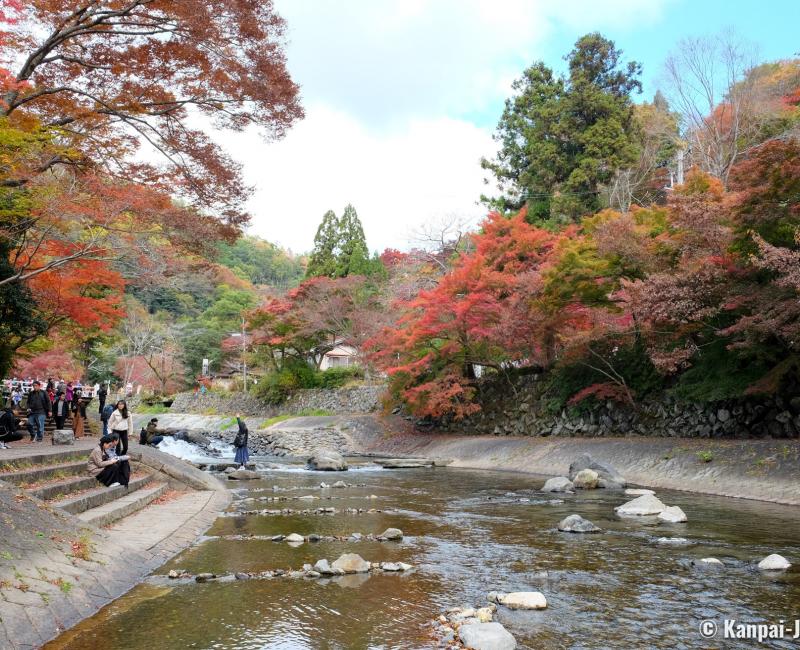
Discovering Yase neighborhood
One must cross Yase small neighborhood to reach Ruriko-in, which is located on the western side of Mount Hiei. Yase is historically famous as the place where Prince O-ama, who would later become emperor Tenmu (~631 - 686), treated an arrow injury on his back thanks to one of the area’s baths. Its bucolic and quiet qualities also made Yase a leisure destination for the nobility and higher-ranking samurai during the Heian period (794 – 1185).
On days when a high number of visitors is expected, access to the temple is organized as soon as getting off the train 🚅 in Yase station, on the Eizan Line. First, one must buy an admission ticket at one of the temporary booths under tents, on the right after exiting the station and crossing a bridge. The ticket states the reserved visit time and the precise meeting place to start the tour. Allow one to two hours wait on a weekday and longer on the weekends.
The time before the reserved hour can be spend on a walk along Takano River. In autumn, the path, surrounded by dazzling colors, is already a very nice koyo spot to take pictures or to simply admire.
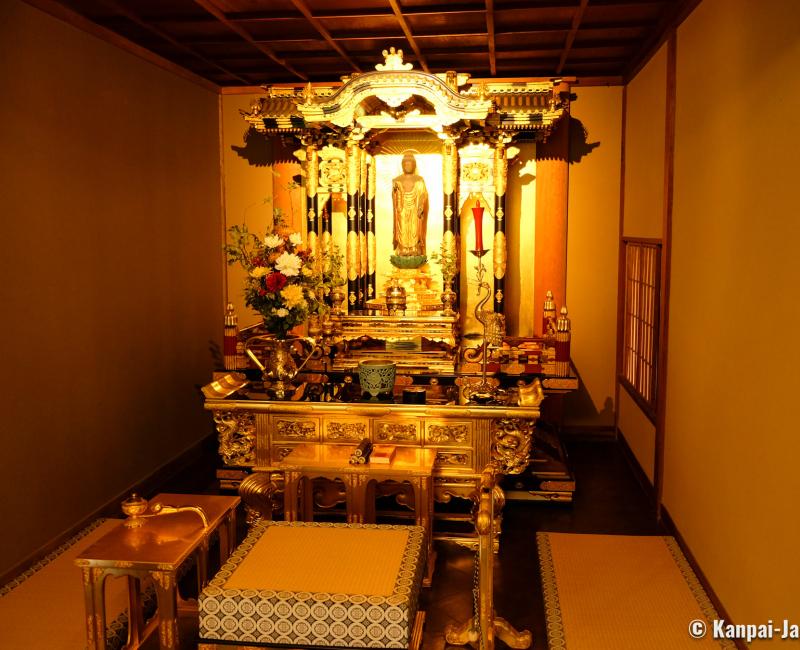
A former villa transformed into a temple
When the time has come, a member of the staff will come pick up the visitors’ group and guide them to the main gate of Ruriko-in.
The temple was initially a villa with a tea house named Kikaku-tei and built by Sanetomi Sanjo (1837 - 1891), an eminent nobleman of the Meiji government (1868 – 1912). The villa was renovated during the Showa era (1926 - 1989), and three gardens were added:
- Ruri-no-niwa, the main moss garden from which the temple’s name derives,
- Yamaroji-no-niwa which means "the mountain alley", and,
- Garyo-no-niwa whose pond was shaped as a dragon flying to the sky.
Affiliated to Komyo-ji temple in Gifu prefecture, Ruriko-in is a Jodo-shu Buddhist sect temple and paintings and screens depicting the Buddhist Pure Land are frequently exhibited there.
Upon entering the temple, take the time to experience shakyo: it consists in copying the characters of a sutra to offer a prayer. The mental recitation while carefully tracing the kanji characters can be a relaxing and soothing experience. It is also possible to inscribe a wish in any language on a traditional paper and leave it at the temple to bring oneself good luck.
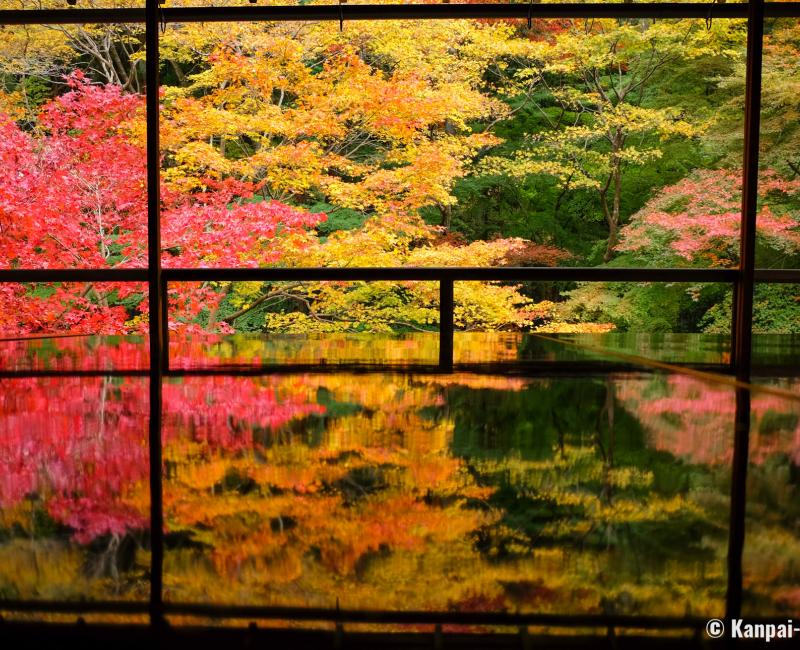
The perfect symmetry of the garden reflection
The tour starts by the highlight of the place: the first floor offers an elevated and unobstructed view on Ruri garden, symbolising "the lapis lazuli blue shine of the Pure Land". The traditional tatami room is famous for the reflection of the maple trees leaves on its dark lacquered table, thanks to very popular pictures in the medias and on the Internet 📶.
Then, at the ground floor, several spaces are to be discovered, such as:
- The steam bath kama-buro, the very one where Prince O-ama bathed to heal his injury,
- A second viewing room on the main garden, at the level of moss and rocks, and where it is also possible to take a picture of the garden’s reflection on the varnished floor of the engawa corridor, that connects the inside to the outside, and,
- The Buddhist altar of the main hall hondo.
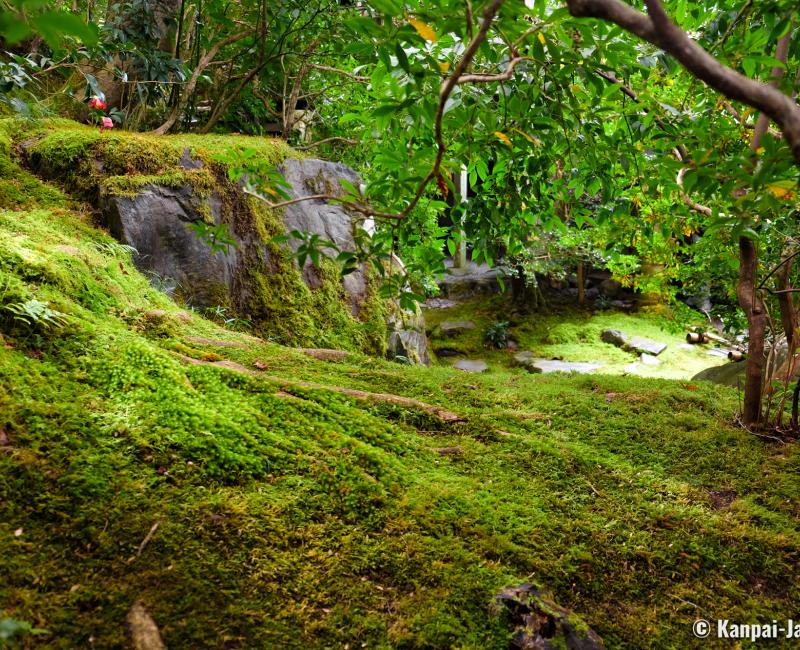
The best periods to visit Ruriko-in
Over the last years, Ruriko-in has unfortunately been a victim of its own success. In the peak season of autumn, at the end of November, Ruri garden is indeed splendid, but somehow spoiled by the crowd hogging the sight to take the perfect picture. One must therefore be very patient to take one’s turn and walk in the temple. What should be a pleasant spiritual visit often feels more like a long waiting line.
For those who would like to discover the whole beauty of the temple in the best conditions, we recommend going on a weekday in October and in early November, to watch the first color changes, as well as in May, after the Golden Week, to contemplate the garden’s shades of green.

